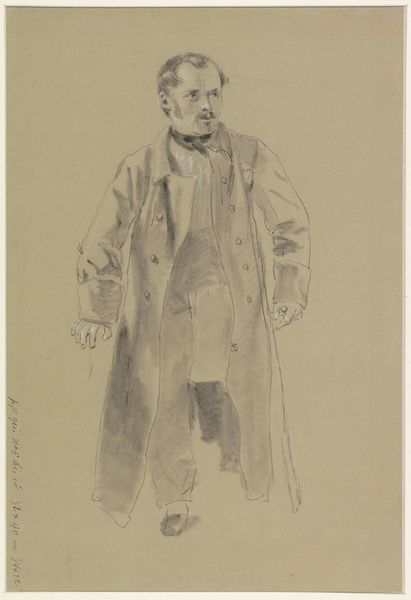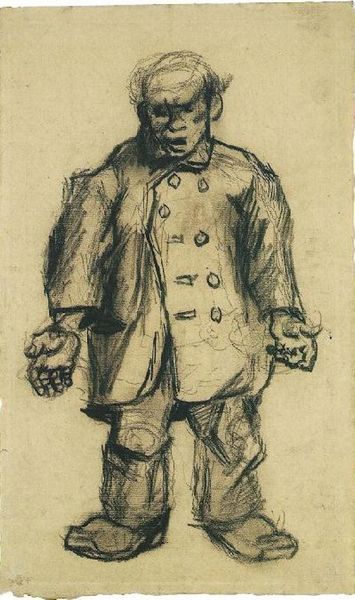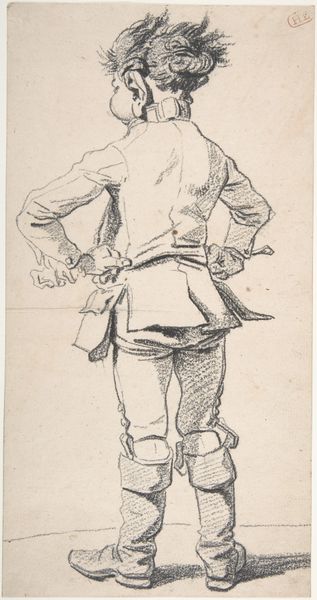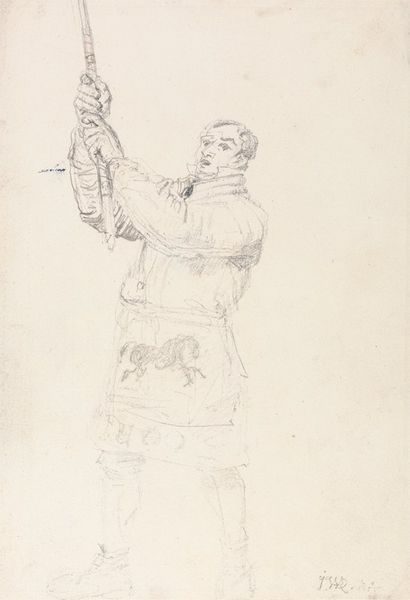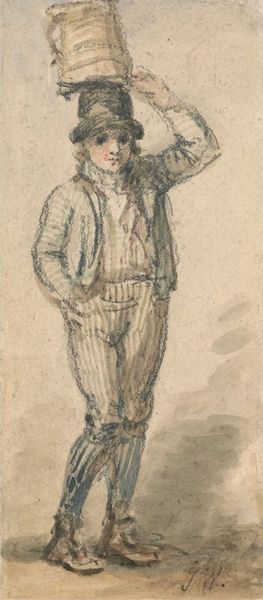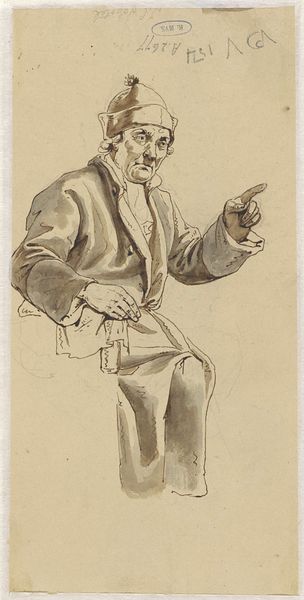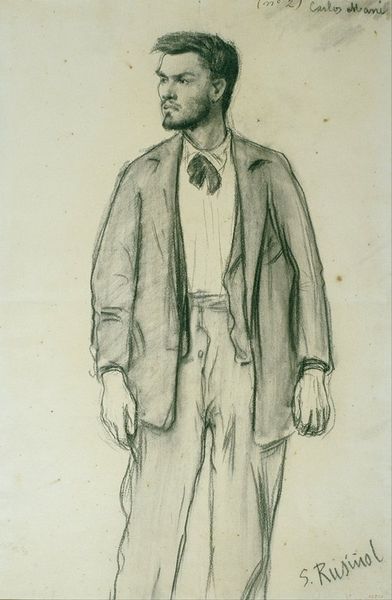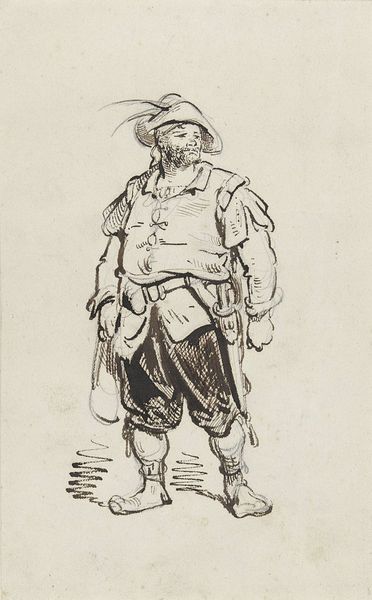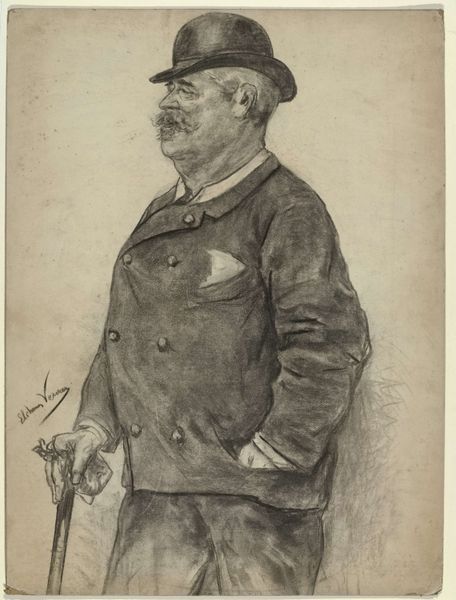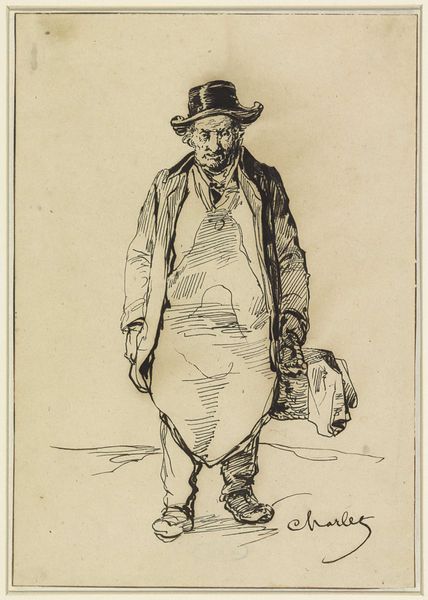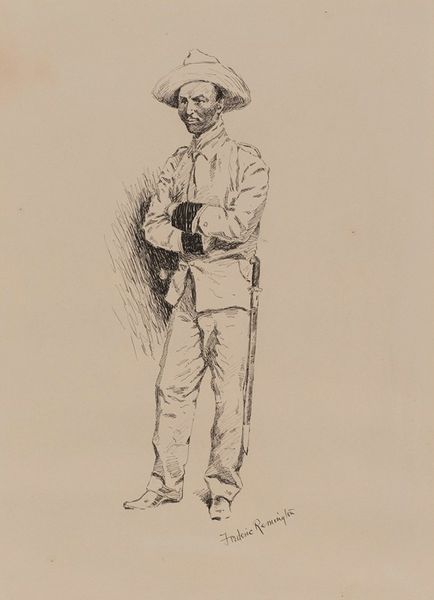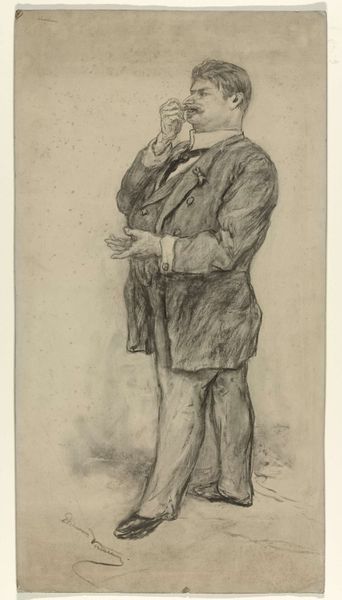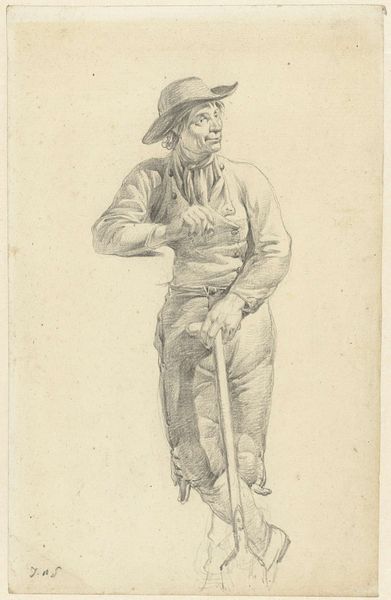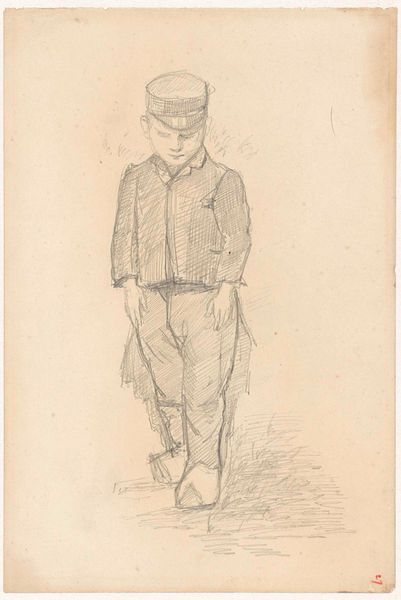
Karikatuurportret van de kunstschilder Willem Adriaan van Konijnenburg 1880s - 1890s
0:00
0:00
drawing, pencil, charcoal
#
drawing
#
charcoal drawing
#
pencil drawing
#
pencil
#
portrait drawing
#
charcoal
#
realism
Dimensions: height 615 mm, width 424 mm
Copyright: Rijks Museum: Open Domain
Editor: So, this is "Karikatuurportret van de kunstschilder Willem Adriaan van Konijnenburg" by Elchanon Verveer, from the 1880s or 90s. It's a charcoal and pencil drawing at the Rijksmuseum. The rendering feels very immediate. What's your take on this work? Curator: It is fascinating how the artist employed such basic materials - pencil and charcoal - to create a work commenting on class and the construction of identity. The clothing, seemingly mimicking military attire, points to the artist Willem Adriaan van Konijnenburg's social positioning or perhaps aspiration. We can look at this drawing as an object deeply embedded in the socioeconomic structures of the time. Editor: I hadn't considered it like that. I just saw it as a humorous, quickly sketched portrait. But thinking about the materials, was the choice of pencil and charcoal in any way rebellious, a comment on 'high' art? Curator: Exactly. Think about the availability and cost of these materials compared to, say, oil paints. Was Verveer making a statement about accessible art production or even critiquing the elitism of the art world through his deliberate material choice and caricatural style? Also consider that a caricature, as a form, also tends to subvert social standing through humorous exaggerations. Editor: So, the materials, style, and subject matter all tie into a broader social commentary? Curator: Precisely. This is not just a simple drawing, it's an object manufactured within and reflecting a complex network of social relations, economic realities and artistic traditions of its time. Editor: I see it now; I won’t look at charcoal drawings the same way again. Curator: Understanding art through its material conditions opens a whole new level of interpretation.
Comments
No comments
Be the first to comment and join the conversation on the ultimate creative platform.
